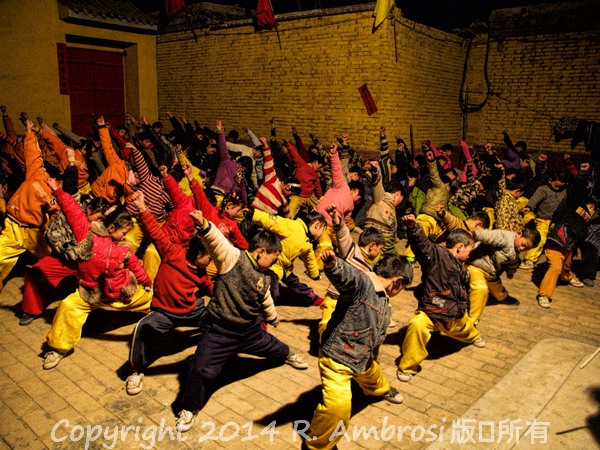First blog post
Hi! This is the first blog entry in Trimal Blog
Hi! This is the first blog entry in Trimal Blog
I’m not much of a party-drinker type. Those days are long gone- in fact, I’m not sure I ever went through any such phase. I never liked that type of “night life” even when I just began my undergraduate degree…
A daytrip to Yangtaishan on the outskirts of Beijing is one of my favorite short trips. Its very easy to get to by public bus and is not very far away.
Wanshou Temple (Longevity Temple) is located on Suzhou Jie in Beijing. The temple is still an active Buddhist temple and also houses the Beijing Art Museum (北京艺术博物馆/北京藝術博物館). The temple was built in 1577 during the Wanli reign of the Ming…
Note: This article was commissioned by the Goethe-Institut and first appeared on www.goethe.de/china in November 2013. It appeared on the Goethe-Institut website in German, Chinese and English and can be found at http://www.goethe.de/ins/cn/en/lp/kul/mag/vtr/swl/11980640.html. Chinese and German translations are also provided. I have republished it here in conformance with the copyright contract I signed with Goethe-Institut but have added several additional photos and captions.
Chinese version of the article follows the English version.
Old martial art brings new spirit to rural China
Note: The names of places and people have been changed to protect privacy.

Despite the prolific rural outmigration caused by China’s rapid urbanization, Minghe village in Heibei province is experiencing a renewal of community development and social cohesion that is attributable to the revival of a once-outlawed folk martial art and sectarian religious group, Meihuaquan (Plum Flower Boxing). The social function of meihuaquan activities– increased communal cooperation and an enhanced sense of social responsibility – is helping remedy the critical deficit in social trust and community cohesion that characterizes contemporary Chinese society.
Over the last three years, I attended a nearly all of the lectures and events held by two different organizations in Beijing that encourage academic exchange among Chinese and non-Chinese scholars. One group “ThinkInChina” presents a monthly lecture by a…
Continue reading the "Euraxess Science Slam 2014. Meihuaquan & Community Life 梅花拳与社群的建设" »
Review of MyInfo Freeform Personal Organizer after 3 years of daily use. Currently in revision! Check back in a few weeks. A greatly expanded review is in the works! MyInfo is a software application commonly known as “Note-taking software” or…
Continue reading the "Review of MyInfo Freeform Personal Organizer." »
http://www.yn-meihuaquan.org/ This is the website of the Yongnian County Meihuaquan Chuanbojidi 永年县梅花拳传播基地网站 (The Yongnian County Meihuaquan Teaching Centre) 中国非物质文化遗产梅花拳传播基地—永年县故城村 梅花拳播基地管委会主任第十四梅花拳弟子 张高彦 永年县梅花拳传播基地—故城村 当你步入冀南永年县东部离县城30华里的故城村,从前街中段往北看,首先 映入眼帘的是个金光灿烂的行书匾牌《永年县梅花拳传播基地》。再往里走, 一座宏伟壮观,青瓦屋顶,五脊六兽,布局结构和谐的仿古建筑就呈现在您面 前,这就是梅花武馆。步入屋内,十八般兵器样样俱全。故城的梅花拳武馆早 在清朝时期就有了。据史料记载,在1745年,12辈拳师张爱忠祖太爷在故城曾 设立武馆。占地大约八,九十平方丈左右,上房五间,各种刀,枪,剑,棍, 武术器材样样俱全,收弟子百余名。 在日本侵华期间,张爱忠与日本拳师打擂 比赛,一举击败日本拳师。当时在故城方圆百里的百姓无不称赞,梅花拳为民 族做出了榜样。日本拳师恼羞成怒,一把大火,将武馆烧为灰烬。 北京大学博士研究生安瑞德先生(加拿大)在故城村和梅花拳爷们,学员一起合影 随着改革开放东风,人民物质生活水平提高,人们对 梅花拳强身健体的功用以及人品道德素质教育作用产生了浓厚的兴趣。故城村梅花拳第十四辈弟子张高彦和众多梅花拳弟子致力于保护和继承这宝贵的文化遗产,张 高彦作为河北省永年县故城村梅花拳传播基地主任和管委会全体成员和许多梅花拳弟子一起,自备酬金,慷慨解囊,集资二十多万,经过近十个月不辞劳苦废寝忘食 的施工终于在2007年十月份全部竣工。 并于2007年(农历十一月一日举行了声势浩大隆重的开光典礼。有县级有关领导和周边各县有关领导莅位光临。永年县文体局亲自举行了授牌仪式,故城村被命 名为“永年县梅花拳传播基地”。为庆祝这喜庆的日子,许多来自全国各地武术表演队,大型剧团,周边百余里各县武术爱好者,云集到故城村,梅花拳传播基地还 邀请到来自遥远的加拿大梅花拳协会会长安瑞德先生,山东大学民俗学院教授,梅花拳爱好者张士闪先生。此举动收到了上级领导的好评,开创了梅花拳武术在永年…
Continue reading the "Yongnian Meihuaquan Teaching Centre. 永年县梅花拳传播基地网站" »
Death of Mr. Zhang Gaoyan. A short obituary celebrating his life. 张高彦同志生于一九五三年农历三月初一,因长期劳积成病、经多方医治无效,于二零一二年农历后四月二十三日下午十七点二十分与世长辞享年六十岁。 Zhang Gaoyan was born on the first day of the third Lunar month, 1953. Because of being overworked for too long, he fell ill, and after seeking unsuccessful…
Meihuaquan & martial arts 梅花拳和武术 Raymond Ambrosi, currently a PhD student at Peking University, Beijing, China. His research examines the socio-cultural and economic functions of meihuaquan martial arts groups and their role as nascent civil society organizations in rural Hebei…
You must be logged in to post a comment.